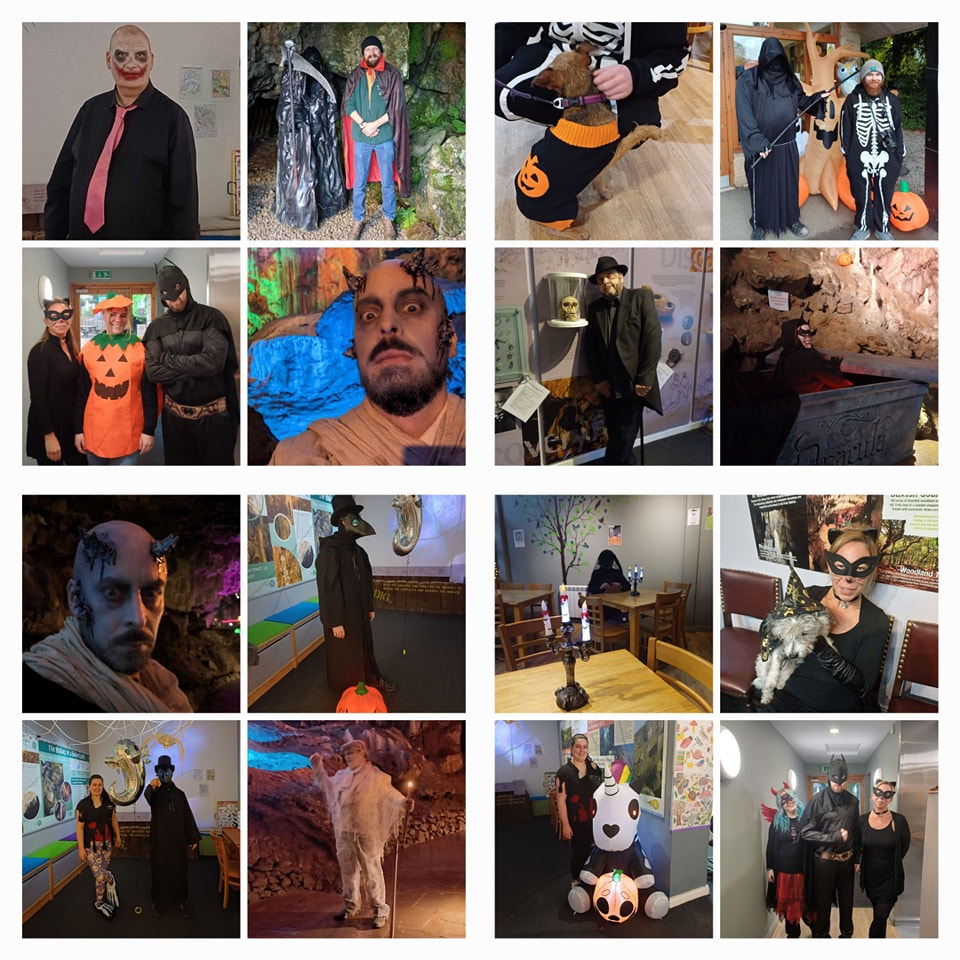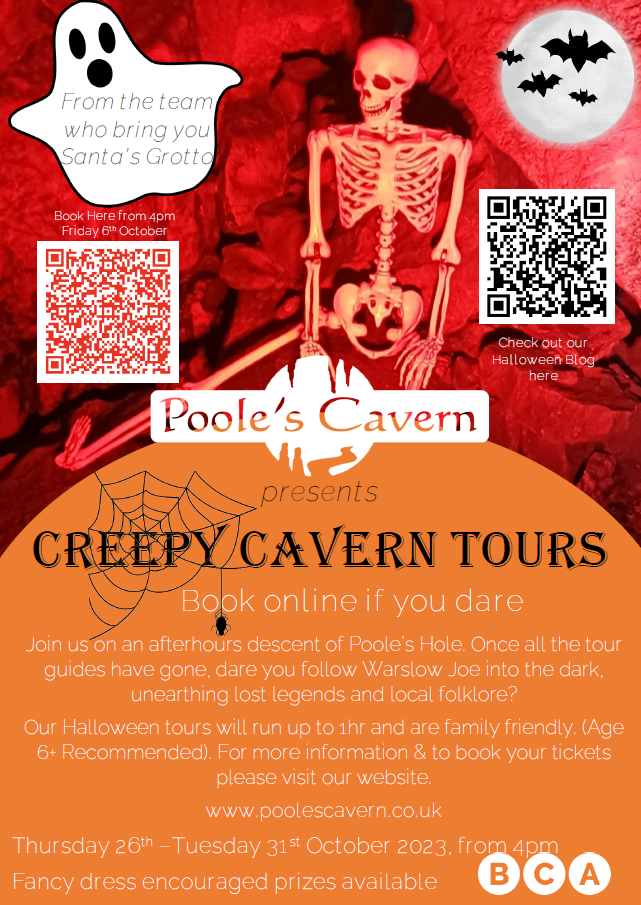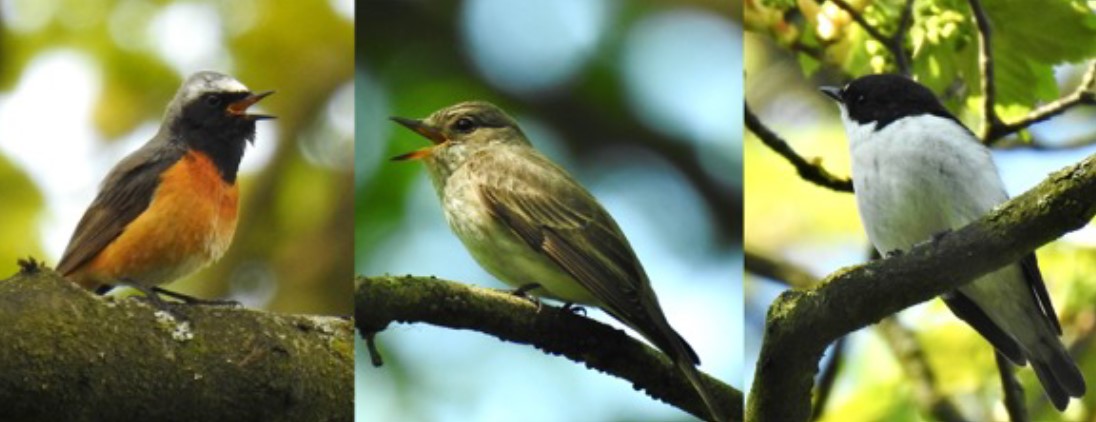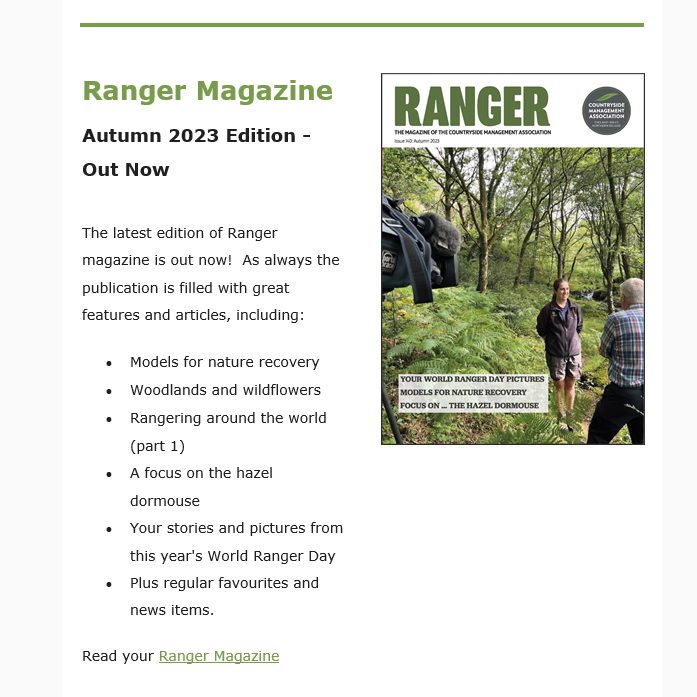It’s time to hide when the witches come out to ride

Getting into the Spirit of Halloween
As some back ground to Poole’s Cavern’s Creepy Cavern Tours in the cave of terrors, we have done a little research on the meaning and origins of Halloween.
Halloween is celebrated on the night of October 31st, and has a fascinating history that goes back centuries. While today it's a time for costumes, trick and treating, and haunted houses, the origins of Halloween are rooted in ancient traditions and beliefs.
Let's take a journey through time to discover the mysterious beginnings of this traditional holiday.
Halloween's origins can be traced back to the Celtic festival of Samhain, the festival marked the end of the harvest season and the beginning of winter, a time when darkness prevailed, and the veil between the living and the dead was believed to be at its thinnest. This made it easier for spirits and supernatural entities to cross over into the mortal world.
During Samhain, Celts would light bonfires to ward off evil spirits and offer sacrifices to appease the wandering dead. People would also wear costumes, typically made from animal skins, to disguise themselves from malevolent spirits. This tradition of dressing up continues in the form of modern Halloween costumes.
In the early eighth century, the Catholic Church adopted the pagan celebrations of Samhain by introducing All Saints' Day (also known as All Hallows' Day) on November 1st. This was a day to honour all the saints and martyrs. The night before All Saints' Day became known as All Hallows' Eve, which eventually evolved into Halloween.
The Church's influence didn't eliminate the ancient traditions entirely, though. Many of the customs, such as lighting bonfires and wearing costumes, persisted in a somewhat altered form, now intertwined with Christian rituals.
Halloween, as we know it today, took shape in the United States during the 19th century. Irish and Scottish immigrants brought their Halloween customs to North America, where they mingled with other traditions and morphed into the holiday we celebrate now here in the United Kingdom.
One key development was the widespread practice of trick-or-treating. It became popular in the early 20th century and involved children going from house to house, asking for treats or money in exchange for singing songs, telling jokes, or performing tricks. The idea behind this was to prevent mischievous pranks, a nod to the earlier custom of "souling" where people would offer prayers for the dead in exchange for food.
Over time, Halloween also embraced a love for spooky and macabre elements. The holiday became a time for ghost stories, haunted houses, and horror movies, solidifying its status as a celebration of all things eerie and mysterious.
So, Halloween is a holiday with deep roots in ancient Celtic traditions and Christian rituals, which has evolved over centuries to become the festive, spooky, and sweet-filled celebration we know today. While its origins are connected to the transition from harvest to winter, it's now a time for people to revel in the thrill of the unknown, dress up in costumes, and enjoy the excitement of trick-or-treating. As you prepare for this year's Halloween, remember the rich history and traditions that have contributed to the holiday's enduring allure. Happy Halloween! And if you are feeling brave enough, book onto one of our Creepy Cavern Tours.
Remember, It’s time to hide when the witches come out to ride.



